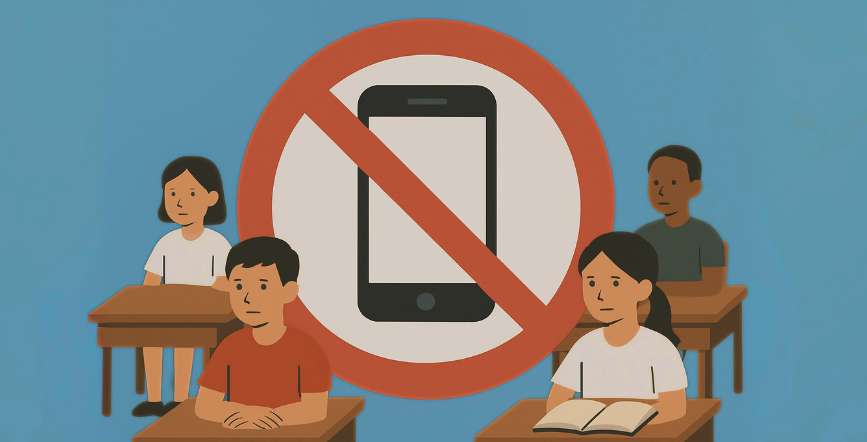A Conversation with Anne Collier on School Phone Bans

For our August issue of The Assurance Newsletter, we spoke with Anne Collier, Founder and Executive Director of Net Safety Collaborative, whose work has long emphasized the importance of youth agency, nuanced policy, and open communication in navigating digital challenges. With school phone bans in the spotlight, Anne offers a thoughtful perspective on what’s driving the trend, the risks of a “ban first” mindset, and how families and educators can work with students to create smarter tech policies:
We’re seeing more schools across the U.S. adopt phone bans during the school day. In your view, what’s fueling this trend?
“I think it’s a combination of things, a perfect storm, if you will: technology developing faster than ever over 20+ years; the anxiety educators and other adults feel when they think they’re not keeping up; our early-adopter kids’ avid adoption of the latest games, apps and practices of their peers; pressure on schools from parents who are themselves feeling pressure to keep up with their kids; the flood of news from all forms of media associating the youth mental health crisis almost exclusively with tech; and then high-profile books by celebrity scholars astutely capitalizing on all the above, calling for bans, which are then called for by lawmakers and captured in legislation and then the news. Rinse and repeat.”
What do you think we risk losing when we take a “ban first” approach to solving tech challenges in schools? What are the consequences and opportunities?
“Ban first” is reflexive, just by definition. Regardless of the subject, I don’t think any thoughtful policymaker at the household, school or national level, would advocate for setting policy reflexively or unthinkingly. So what we risk losing is good policy informed by research – at the very least informal local research about the best policy for “our students,” “our school [or district or family].”
There’s obviously nothing inherently wrong with banning cellphones in school – I just hope school leaders are closely following how helpful or not it is and for whom, talking with teachers and students about what does and doesn’t work about a ban and calibrating policy to what they discover. The problem with all-out, one-and-done bans is that they’re a blunt instrument, when they might help some students or work in some classrooms where teachers haven’t figured out how to incorporate phones into learning but not in others. And what about differences by grade levels? Also, kids and teens are so good at finding workarounds to prohibitions, especially digital ones. Bans are no panacea – far from it.”
For parents navigating mixed messages from schools, peers, and their own kids, what are some practical ways they can encourage healthy tech habits at home during the school year?
“There are so many ways to answer that. For starters, what are we parents modeling? How much are we on our own devices in our children’s presence? Research has shown it’s a problem when parents set rules or limits that they don’t follow themselves.
Also, we know from child development experts that, first and foremost, what all kids need are a healthy amount of sleep, physical activity, social interaction and a nutritious diet. So that’s a good framework for tech use, right? Are they on their phone so late that they’re not getting enough sleep? Are they getting a decent amount of exercise? Is there a good balance of in-person and on-screen socializing? etc. A parent and child might figure out the best balance of on- and off-screen together, not to mention balancing social with everything else.
Which points to the greatest need for parents and kids, what has supported kids’ wellbeing for eons and is now more important than ever – good communication, not too much, not too little – on parents’ part, the curious, open-minded kind that keeps communication going rather than shutting it down.
It’s pretty normal for parents to be fearful about whether they’re getting it right, but I think it’s important for us to try to discipline our fear too – not impose it on our kids or allow it to overshadow family life. We can certainly level with them that we’re afraid, for example, about negative consequences of tech. That honesty can be good for communication. But adolescents want to get as far away as possible from fearful adults, and they need our input. I love what clinical psychologist Lisa Damour said in an interview a couple of years ago: that what our children need most is a steady presence in their lives.”
Your work often highlights the importance of youth voice—how should students be meaningfully included in shaping school policies around phone use and digital behavior?
“I’ve heard so many great stories from school leaders about how they work with students to solve problems and develop policy when leadership treats student leaders’ inputs as part of their roles. When we prototyped a social media helpline for US schools in the last decade, we found that the best school leaders who worked with us – the ones who knew they needed students’ understanding of both the tech and what was going on among peers – were the ones who got results in reducing cyberbullying.
We also know from the research that student voice and agency not only grow confidence and competency but are protective as well. Research has found that, in cases of bullying and cyberbullying, bystanders are just as emotionally vulnerable as targets because of the helplessness they feel. Prof. Ian Rivers in the UK found that “the single most significant predictor of suicide risk among bystanders was found to be powerlessness,” the opposite of agency. And where student use of tech is concerned, researchers in a book I co-edited wrote that, “when youth saw themselves as in control of their social media use, they not only reported greater life satisfaction and perceived social support but also less depression, anxiety, and stress.”
Looking ahead, what would a balanced, forward-thinking approach to phones in schools look like to you?
“Each school community (or district) developing policy based on what it finds to be best for the students and teachers in their school communities, rather than external pressures – with input from the lived experience of students as well as academic research.”

 Anne Collier
Anne Collier